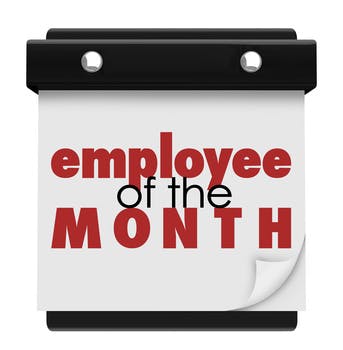Recognition programs are vital tools in an organization’s total rewards strategy, but beyond the knowledge that “recognizing employees is a good thing to do” we can look to data that back up recognition programs as an important part of an organization’s culture.
WorldatWork and ITA Group’s Trends in Employee Recognition 2013 is a good example of a data-driven look into why recognition programs are important.
Their report summarizes the results of a survey sent globally to 5,520 WorldatWork members, which aimed specifically to measure specific types of recognition programs and the impact on the workforce. Respondents were randomly selected members who had designated responsibilities at the executive, top or senior level and members that specified total rewards as their specific function area.
Moving to recognition that drives results
While many functions and structures of the workplace are shifting as the world of work becomes more global, tech-enabled, and demographically diverse, recognition programs remain steady as a utilized tool among organizations.

What shifts in the landscape of recognition programs is not the use of programs themselves (as we see from the percentage of organizations using recognition programs remaining steady over a five-year period) but the types of programs used.
Of the Top 5 recognition programs in 2013, the Top 3 remained the same (length of service, above-and-beyond performance, and peer-to-peer recognition) but programs that motivate specific behaviors moved to the 4th spot for most used programs with a 7 percent increase over 2011 to 41 percent overall (a statistically notable change since 2008). Also notable is the drop in retirement recognition programs as a prevalently used program.
As WorldatWork states in the report, the data seems to indicate that organizations are moving away from legacy recognition programs towards programs that can drive results. But, how much and fast is the landscape changing, though?

Leveraging for a direct impact on business results
While fresh-off-the-press data is valuable, looking at data like this (with a bit of hindsight) is also valuable in that it reminds us that data and reports around organizational culture can accurately predict trends in upcoming years — and allows us fact-check theories and perspectives.
WorldatWork’s data pointed to organizations moving towards recognition programs that can be leveraged to have a more direct impact on business results (like peer-to-peer recognition, programs to motivate behaviors, and above-and-beyond performance) vs. recognition programs like length-of-service and retirement recognition programs which have been in use for many years. They note that programs to motivate specific behaviors grew every year by 16 percentage points since they survey was first instituted in 2008.
We’ve seen such trends hold true, with organizations in today’s increasingly fast-paced and competitive context instituting recognition programs that can more quickly impact strategic goals. Workplace wellness programs are another type of recognition program that WorldatWork’s survey points to which we’ve seen adopted at a growing pace. In 2011 and 2013, respondents noted wellness rewards programs as “other recognition programs” that their organization use.
More data from the report
Some other nuggets of data to consider from WorldatWork’s report included:
- In 2013, the top four recognition goals remained primarily unchanged from past years and were —
- Recognizing years of service;
- Creating a positive work environment;
- Creating a culture of recognition; and,
- Motivating high performance.
- The most common types of recognition awards reported in 2013 were —
- Certificates/plaques;
- Cash;
- Gift certificates;
- Company logo merchandise; and,
- Food.
- Organizations in 2013 budgeted an average of 2 percent of their payroll budget to be used for recognition programs (the same as 2011).
- Only 12 percent of organizations in 2013 reported training managers on recognition programs.
- Some 46 percent reported management perceiving recognition programs as an investment vs. an expense in 2013.
- Only 34 percent of respondents in 2013 said they believed recognition programs had a positive impact on retention.
Are companies just sticking with the “tried and true?”
The fact that organizations have consistently utilized recognition programs over the years reminds us that this is an important part of creating a great organizational culture and a great total rewards strategy.
But are organizations reworking recognition programs to be as impactful as possible, or are they just sticking with “tried and true” methods? Do plaques, gift cards and food motivate employees to stay engaged and on board?
Perhaps the respondents in this survey, only 34 percent of whom believe recognition programs had a positive impact on retention, are on to something.
Perhaps sincere appreciation from trusted leaders and peers is more meaningful than a certificate.
Perhaps a hand written thank you note from the CEO for above and beyond performance creates more stickiness than a $25 gift card.
Or, maybe a video message from a senior leader on a milestone employment anniversary date motivates greater engagement than a plaque.
Great recognition = great workplace culture
At Great Place to Work, we certainly see positive correlations between lower levels of turnover and great workplace cultures. So if leaders don’t associate recognition programs with lower levels of turnover, there’s more work to be done.
Maybe ditching the plaques and adding some human touches to your recognition programs might be something to consider. One thing is certain: Everyone – regardless of generation – wants to be appreciated for their contributions by leaders they trust.
It’s really not that hard to understand. But how do we make it happen?
This originally appeared on China Gorman’s blog at ChinaGorman.com.
